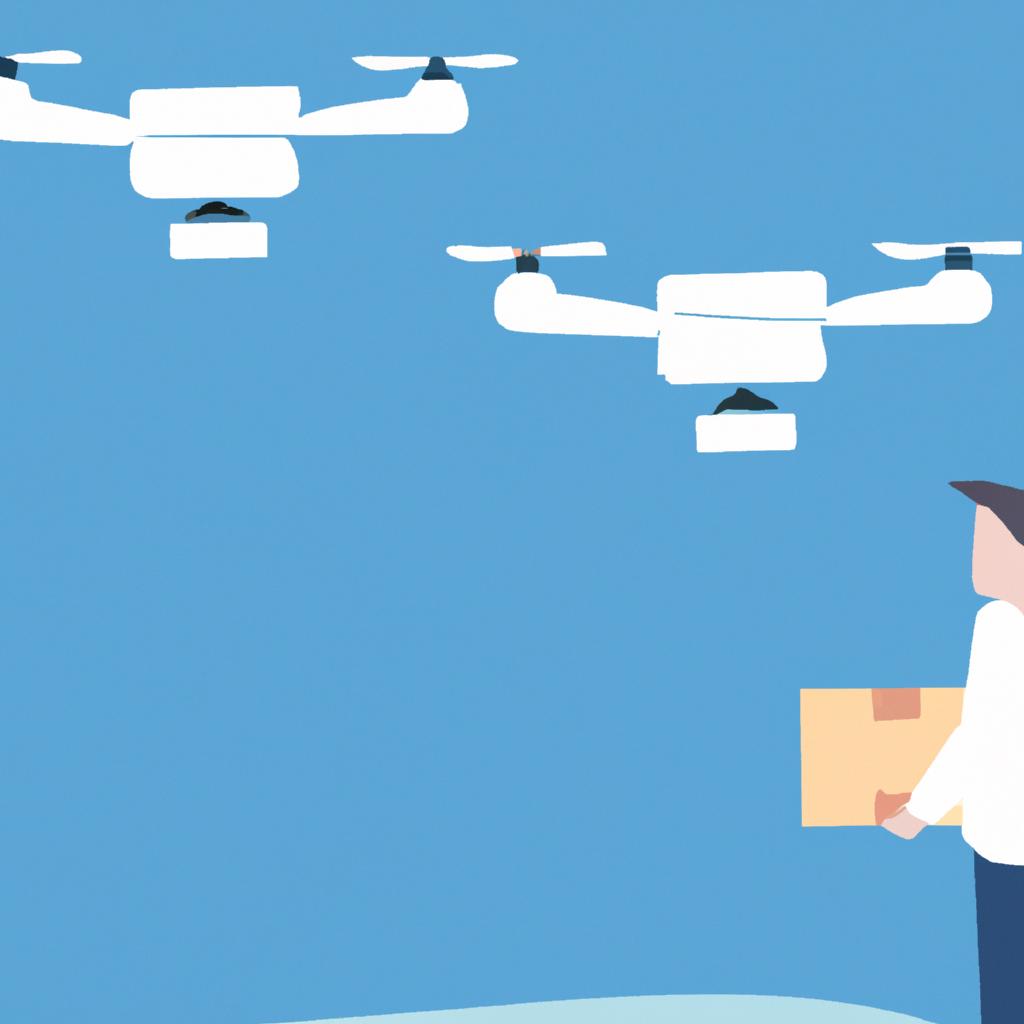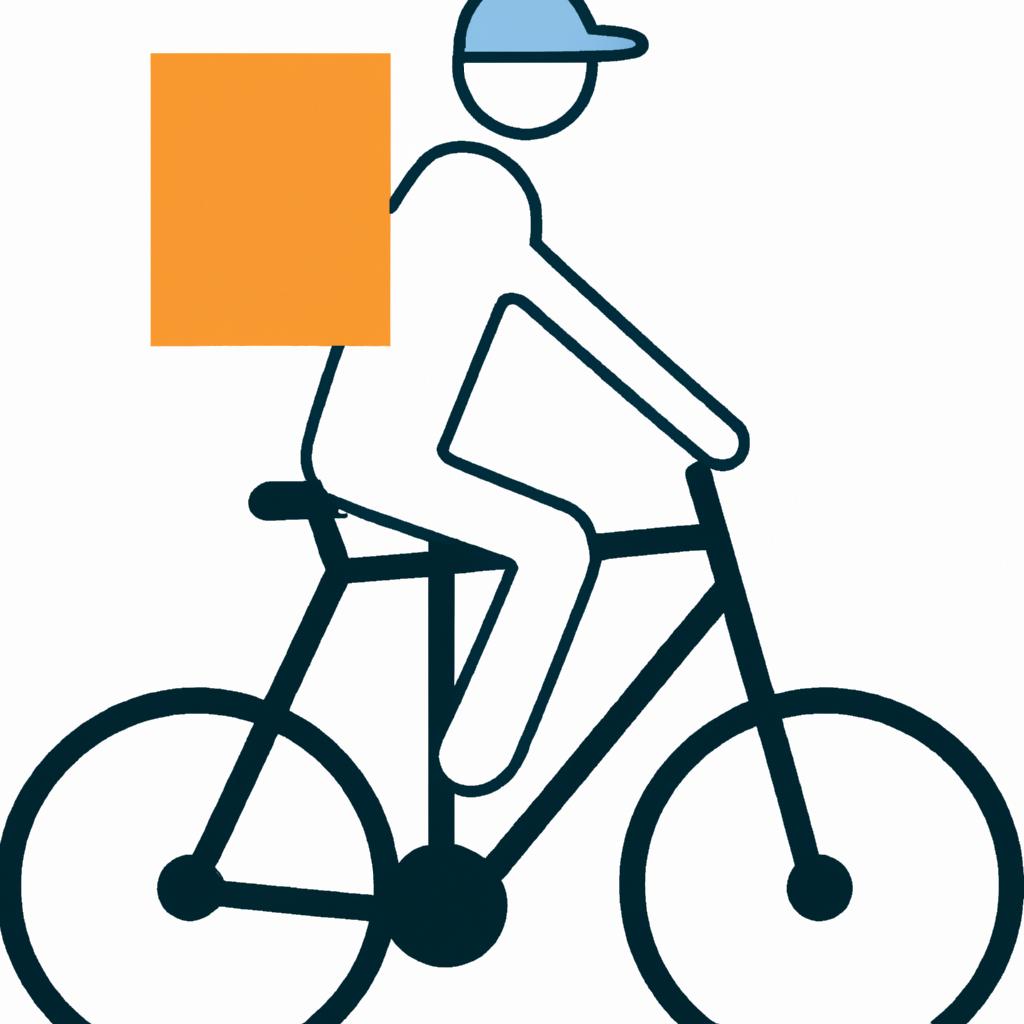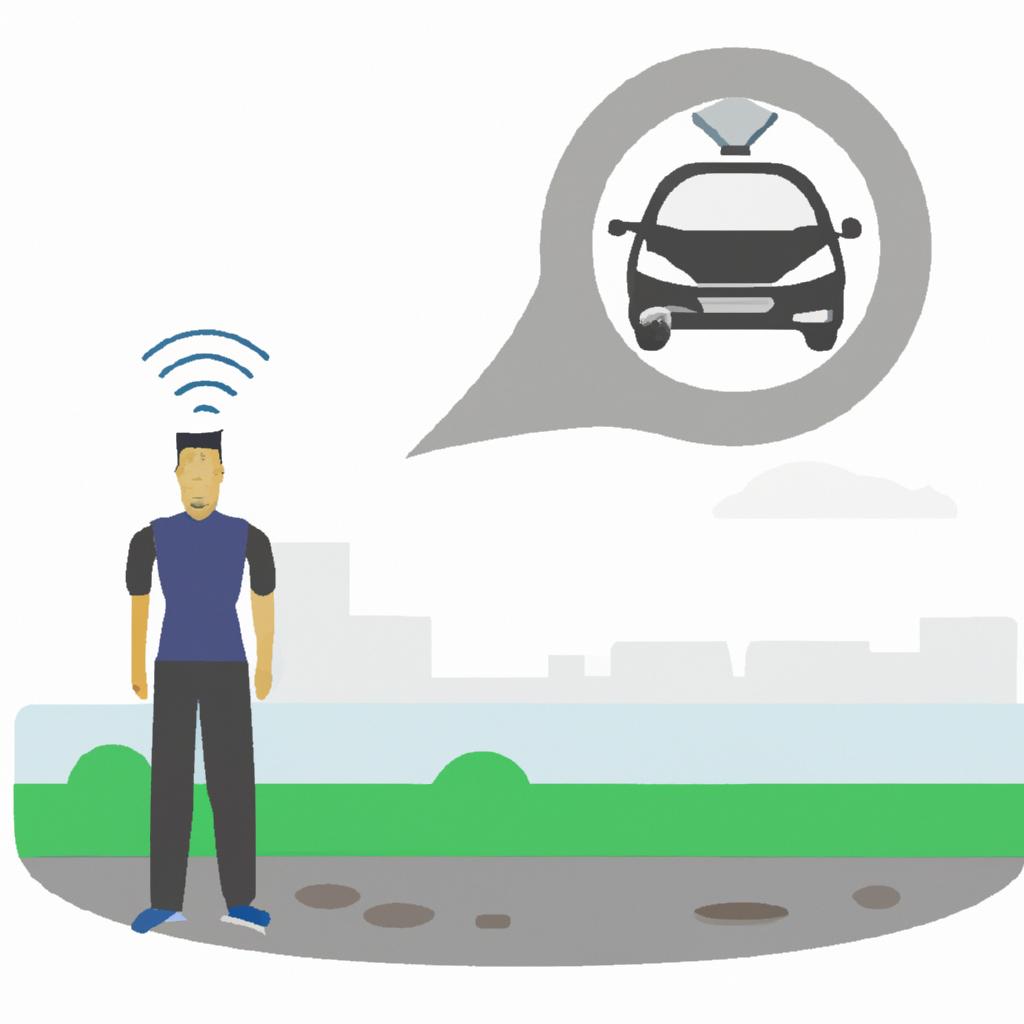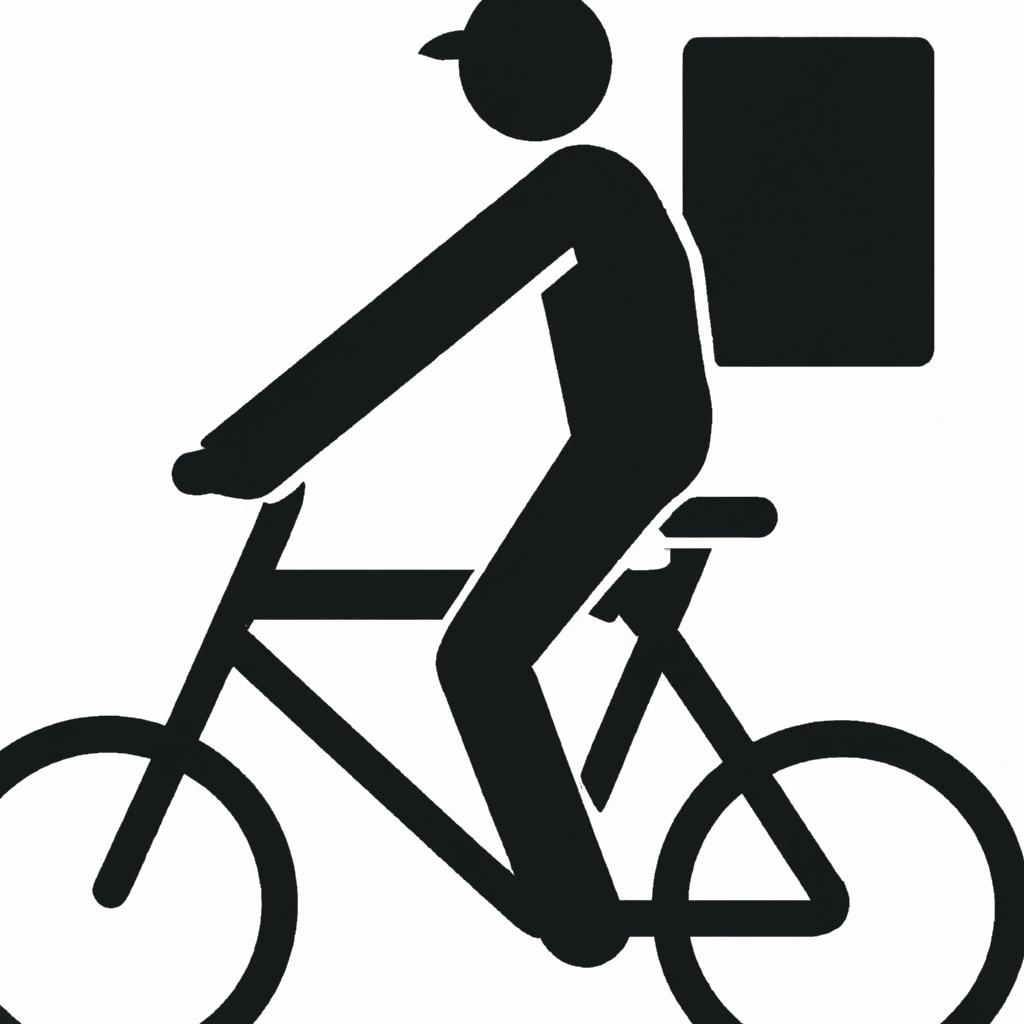Delivery Drones Revolutionize Transportation and Logistics: Last Mile Delivery Insights


In recent years, the rise of e-commerce and online shopping has dramatically changed the way goods are transported and delivered. Traditional methods of last mile delivery, which involve using trucks or vans to transport packages from a central hub to their final destination, have faced numerous challenges in terms of cost efficiency and time effectiveness. However, with advancements in technology, particularly the development of delivery drones, there is a growing potential for revolutionizing transportation and logistics processes. For instance, imagine a scenario where a customer urgently needs medication but lives in an area with limited accessibility due to traffic congestion or remote location. In such cases, the use of delivery drones can provide an innovative solution by delivering essential items directly to the doorstep within minutes.
The integration of delivery drones into transportation and logistics systems offers several advantages that make it a promising option for last mile delivery. Firstly, these unmanned aerial vehicles (UAVs) have the capacity to bypass road congestion, reducing delays associated with traditional ground-based deliveries. As seen in various case studies conducted by companies like Amazon Prime Air and UPS Flight Forward, autonomous drones can efficiently navigate through airspace while avoiding obstacles and adhering to safety protocols. Secondly, drone delivery services have the potential to significantly reduce costs incurred during last mile operations. By eliminating fuel expenses and reducing the need for human drivers, delivery drones can help companies save on labor and transportation costs. Additionally, the use of drones can also lead to improved fuel efficiency and lower carbon emissions compared to traditional vehicles.
Moreover, delivery drones offer a level of flexibility that is unmatched by conventional methods. They can easily reach remote or hard-to-access areas, such as rural locations or densely populated urban centers with heavy traffic. This opens up new possibilities for businesses to expand their customer base and serve previously underserved regions.
In terms of speed, delivery drones have the potential to provide rapid deliveries, particularly for time-sensitive items like medical supplies or emergency response equipment. With advancements in technology and infrastructure development, drone networks could be established to ensure quick and efficient delivery within minutes.
However, there are still some challenges that need to be addressed before widespread adoption of delivery drones can occur. These include regulatory hurdles regarding airspace management and safety regulations. Ensuring that drones operate safely alongside other aircraft and do not pose a risk to people or property is crucial.
Additionally, there may be concerns regarding privacy and security when it comes to drone deliveries. Appropriate measures must be put in place to protect personal information and prevent unauthorized access or tampering with packages during transit.
Overall, while there are obstacles to overcome, the integration of delivery drones into last mile logistics holds great potential for transforming the way goods are transported and delivered. As technology continues to advance and regulations adapt accordingly, we can expect to see an increase in the use of these autonomous vehicles for efficient and timely last mile deliveries.
Benefits of Delivery Drones in Transportation and Logistics
Benefits of Delivery Drones in Transportation and Logistics
To showcase the potential benefits of delivery drones in transportation and logistics, let us consider a hypothetical scenario where a major e-commerce company introduces drone technology for last-mile deliveries. This company operates on a global scale, delivering products to customers across various locations. By incorporating delivery drones into their operations, they can revolutionize the way packages are transported, providing numerous advantages over traditional methods.
Firstly, one key benefit of using delivery drones is their ability to navigate through congested urban areas more efficiently than conventional vehicles. While traffic congestion often causes delays and increases costs associated with package delivery, drones have the advantage of being able to bypass this issue entirely. The use of aerial routes allows them to deliver packages directly from warehouses or distribution centers to customers’ doorsteps without getting stuck in traffic jams.
Secondly, implementing delivery drones can significantly reduce carbon emissions generated by transportation activities. Unlike conventional vehicles that rely on fossil fuels and contribute to air pollution, drones operate on electric power sources. They produce zero direct emissions during operation, resulting in reduced environmental impact compared to traditional modes of transport. In an era where sustainability is increasingly important, integrating drone technology into transportation systems aligns with efforts towards greener practices.
Furthermore, utilizing delivery drones enhances operational flexibility and scalability within the logistics industry. Traditional modes of transportation often face limitations due to infrastructure constraints or workforce availability issues. However, deploying fleets of autonomous drones provides businesses with greater adaptability in meeting changing customer demands. With proper planning and coordination systems in place, companies can easily adjust the number of deployed drones based on varying order volumes or specific time-sensitive requirements.
The following markdown bullet point list highlights some emotional responses evoked by these advancements:
- Reduced delivery times leading to increased customer satisfaction
- Enhanced convenience as parcels reach customers’ homes faster
- Improved safety measures due to minimized human involvement in risky driving situations
- Excitement about embracing cutting-edge technology for everyday tasks
Additionally, the table below summarizes key advantages of delivery drones:
| Advantages | Description |
|---|---|
| Efficient | Faster and more direct routes avoid traffic congestion, leading to quicker deliveries |
| Environmentally Friendly | Electric-powered drones produce zero direct emissions, contributing to sustainability goals |
| Flexible | Scalable operations allow businesses to adapt easily to changing demands and market trends |
| Innovative | Embracing drone technology showcases a commitment to innovation and staying ahead in the industry |
In conclusion, incorporating delivery drones into transportation and logistics systems offers numerous benefits. From efficient navigation through congested urban areas to reduced carbon emissions and enhanced operational flexibility, these advancements are transforming the industry. In the subsequent section, we will explore how delivery drones boost efficiency within the transportation and logistics sector.
[Efficiency Boost: How Delivery Drones are Transforming the Industry]
Efficiency Boost: How Delivery Drones are Transforming the Industry
Transition: Building upon the benefits discussed in the previous section, delivery drones have revolutionized the transportation and logistics industry. Let us delve further into how these unmanned aerial vehicles (UAVs) are transforming last mile delivery and enhancing efficiency.
Efficiency Boost: How Delivery Drones are Transforming the Industry
To illustrate the impact of delivery drones, consider a hypothetical scenario where a customer places an order for a small package online. Traditionally, this would involve several steps including packaging, dispatching to a local distribution center, loading onto a vehicle, navigating through traffic congestion, and finally reaching the customer’s doorstep. However, with the introduction of delivery drones, this entire process can be streamlined effectively:
- Swift Delivery: Delivery drones can swiftly transport packages from warehouses or fulfillment centers directly to customers’ locations within minutes or hours.
- Reduced Costs: By eliminating various intermediate stages such as sorting at distribution centers and using conventional vehicles for transportation, companies can significantly reduce costs associated with labor and fuel consumption.
- Environmental Benefits: The use of electric-powered delivery drones reduces carbon emissions compared to traditional modes of transportation which rely on fossil fuels.
- Accessibility Improvement: Particularly in rural or remote areas that may lack efficient road infrastructure, delivery drones offer accessibility improvements by overcoming geographical barriers.
In addition to these advantages, there are other aspects worth considering when discussing the transformative potential of delivery drones. A table below provides key insights regarding their impact on different stakeholders:
| Stakeholder | Impact |
|---|---|
| Retailers | Increased operational efficiency; enhanced customer experience |
| Customers | Faster deliveries; convenience |
| Transporters | Potential job displacement; reduced manual labor |
| Regulatory Authorities | Need for adapting regulations to ensure safe operations |
As we continue exploring the implications of drone-based last mile delivery systems, it becomes evident that addressing challenges related to safety and security measures is crucial. Therefore, let us now turn our attention to the measures taken to ensure the safe and secure operation of delivery drones.
Transition: With safety in mind, let us now delve into the topic of addressing challenges regarding safety and security measures for delivery drones.
Addressing Challenges: Safety and Security Measures for Delivery Drones
Efficiency Boost: How Delivery Drones are Transforming the Industry
Delivery drones have proven to be a game-changer in the transportation and logistics sector, revolutionizing last-mile delivery. One notable example is the partnership between e-commerce giant Amazon and its Prime Air drone delivery service. This case study highlights how delivery drones can significantly enhance efficiency and speed by eliminating traditional obstacles.
To fully understand the impact of delivery drones on the industry, it is essential to examine their key advantages. Firstly, these unmanned aerial vehicles offer unparalleled speed, enabling them to bypass congested roads and deliver packages directly to customers’ doorsteps within minutes. This swift mode of transport not only expedites deliveries but also eliminates delays caused by traffic or adverse weather conditions.
Moreover, delivery drones provide an environmentally friendly alternative to conventional modes of transportation. With zero emissions during flight, they contribute towards reducing carbon footprints and promoting sustainable practices in the logistics sector. By integrating green technology into their operations, companies utilizing delivery drones demonstrate a commitment to environmental stewardship while meeting customer demands for eco-conscious solutions.
To illustrate further benefits brought about by this technological innovation, consider the following emotional bullet point list:
- Increased convenience: Customers receive their orders promptly without having to wait for extended periods.
- Enhanced accessibility: Rural areas or locations with limited infrastructure now have equal access to goods and services.
- Improved safety: Reduced human involvement minimizes risks associated with accidents or theft during transit.
- Job creation: The emergence of drone-related roles fosters employment opportunities in various fields such as drone manufacturing, maintenance, and operation.
Additionally, let us explore a three-column table that outlines specific advantages offered by delivery drones:
| Advantages of Delivery Drones |
|---|
| Speedy Deliveries |
| Reduced Cost |
| Greater Flexibility |
In conclusion, delivery drones offer a transformative solution to transportation and logistics challenges. By improving efficiency, reducing environmental impact, and enhancing accessibility, these aerial vehicles have reshaped last-mile deliveries in unimaginable ways. As we delve into the future innovations and advancements in drone technology, it becomes clear that this revolution is just the beginning.
Transitioning into "The Future of Delivery: Innovations and Advancements in Drone Technology," let us now explore how ongoing developments are shaping the next phase of delivery services without skipping a beat.
The Future of Delivery: Innovations and Advancements in Drone Technology
Addressing Challenges: Safety and Security Measures for Delivery Drones
As the use of delivery drones becomes more prevalent, ensuring safety and security measures is crucial to address potential risks. One example that highlights the importance of these measures is the case study of a major e-commerce company that implemented drone deliveries in urban areas. Despite initial success, several incidents occurred due to technical malfunctions and external interference, raising concerns about public safety.
To mitigate such challenges, various safety and security measures have been developed. Firstly, implementing geofencing technology can prevent drones from entering restricted or hazardous airspace. By using GPS coordinates and predefined boundaries, operators can ensure that drones stay within designated flight zones and avoid sensitive areas like airports or military installations. This not only minimizes the risk of accidents but also helps maintain national security.
Secondly, robust encryption protocols are essential to protect data transmission between ground control stations and delivery drones. Encrypting communication channels ensures that sensitive information, such as flight plans or personal data, remains secure from unauthorized access or tampering. Additionally, incorporating authentication mechanisms into drone systems prevents malicious actors from hijacking or manipulating drones mid-flight.
Thirdly, ongoing research focuses on developing collision avoidance technologies for delivery drones. Utilizing sensors like cameras, lidar (light detection and ranging), or radar enables real-time monitoring of the environment around the drone. These sensors detect obstacles in its path and trigger automated responses to navigate safely around them. Implementing advanced algorithms allows drones to make split-second decisions to avoid collisions with buildings, trees, or other aircraft.
To emphasize the significance of safety measures in drone operations:
- Drone manufacturers should comply with stringent regulatory standards.
- Operators must conduct regular inspections and maintenance checks on their fleet.
- Continuous pilot training programs should be established to enhance skills related to safe drone operation.
- Public awareness campaigns highlighting responsible behavior when encountering delivery drones should be conducted.
| Safety Precautions | Purpose | Examples |
|---|---|---|
| Geofencing | Prevent drones from entering restricted airspace | Establishing no-fly zones around airports or sensitive areas |
| Encryption protocols | Secure data transmission between ground control and drones | Encrypting all communication channels to prevent unauthorized access |
| Collision avoidance | Avoid collisions with obstacles during flight | Utilizing sensors and advanced algorithms for real-time monitoring |
In conclusion, addressing safety and security concerns is crucial in the widespread adoption of delivery drones. By implementing geofencing technology, encryption protocols, and collision avoidance systems, potential risks can be minimized, ensuring safe operations. However, continuous efforts are required by manufacturers, operators, regulators, and the public to maintain a secure environment as drone deliveries become more prevalent.
The subsequent section will explore the environmental impact of delivery drones and how they contribute to reducing carbon footprint without compromising efficiency and convenience.
Environmental Impact: How Delivery Drones are Reducing Carbon Footprint
Transition: Building upon the advancements in drone technology, delivery drones have emerged as a revolutionary solution for last mile logistics and transportation. These unmanned aerial vehicles (UAVs) offer unparalleled speed, efficiency, and cost-effectiveness, transforming the way goods are delivered to consumers. As we delve deeper into this section, let us explore how delivery drones are reshaping the future of last mile delivery.
Case Study: Imagine a bustling metropolis where traffic congestion is an everyday challenge. Traditional delivery methods struggle to navigate through congested streets and deliver packages promptly. However, with the deployment of delivery drones, such issues become a thing of the past. Companies like Amazon Prime Air have successfully conducted trials using autonomous drones capable of delivering packages weighing up to five pounds within 30 minutes or less. This innovative approach not only reduces transit time but also enhances customer satisfaction by ensuring swift deliveries.
Delivery Drones: Transforming Last Mile Delivery
To comprehend the impact of delivery drones on last mile logistics comprehensively, consider the following:
-
Increased Efficiency:
- Drone deliveries significantly reduce transit time by bypassing ground-level obstacles.
- Quick and direct routes enable faster order fulfillment and enhance customer experience.
- Autonomous navigation systems optimize flight paths, minimizing delays caused by human error.
-
Cost Savings:
- Automation eliminates labor costs associated with traditional courier services.
- Reduced fuel consumption contributes to lower operational expenses.
- Optimized route planning leads to efficient resource allocation.
-
Environmental Benefits:
- Delivery drones produce fewer carbon emissions compared to conventional vehicle-based deliveries.
- Decreased reliance on road transport helps alleviate traffic congestion and subsequently reduces pollution levels.
Embracing these advantages has prompted various industries to adopt drone technology for their logistical needs. A growing number of companies across sectors ranging from e-commerce giants to healthcare providers recognize the potential benefits that come with integrating delivery drones into their operations.
Regulatory Framework: Policies and Guidelines for Integrating Delivery Drones
As delivery drones continue to revolutionize last mile logistics, it becomes imperative to establish a regulatory framework that ensures safe and responsible use. The following section will explore the policies and guidelines governing the integration of delivery drones into existing transportation systems.
Transition: With an understanding of the impact delivery drones have on last mile logistics, let us now delve into the regulatory framework surrounding their integration within transportation networks.
Regulatory Framework: Policies and Guidelines for Integrating Delivery Drones
Title: ‘Delivery Drones Revolutionize Transportation and Logistics: Last Mile Delivery Insights’
Previous section H2: ‘Environmental Impact: How Delivery Drones are Reducing Carbon Footprint’
Next section H2: ‘Regulatory Framework: Policies and Guidelines for Integrating Delivery Drones’
Transition from the previous section:
Having explored the positive environmental impact of delivery drones in reducing carbon footprints, it is essential to now delve into the regulatory framework surrounding their integration. This section will shed light on the policies and guidelines that govern the use of delivery drones, ensuring safe and efficient operations.
Section – Regulatory Framework: Policies and Guidelines for Integrating Delivery Drones
To understand how delivery drones are being seamlessly integrated into transportation systems, let us consider a hypothetical case study involving an e-commerce giant. In this scenario, the company successfully obtains necessary permissions from aviation authorities to employ drone deliveries within designated urban areas. By adhering to stringent regulations, they ensure public safety while optimizing last mile logistics.
The following bullet point list highlights key aspects of the regulatory framework guiding delivery drone operations:
- Licensing requirements for operators
- Specifications regarding maximum payload capacity
- Restricted flight zones near airports or sensitive areas
- Protocols for emergency situations and potential equipment failures
This table illustrates a comparison between existing regulations in two different countries (Country A and Country B) when it comes to integrating delivery drones:
| Regulations | Country A | Country B |
|---|---|---|
| Operator Licensing | Stringent | Moderately Strict |
| Payload Capacity | Limited | Flexible |
| Restricted Zones | Extensive | Moderate |
| Emergency Response | Detailed | General Guidelines |
As we can see from these examples, governments worldwide recognize both the advantages and challenges associated with incorporating delivery drones into existing transportation models. Striking a balance between enabling technological progress and safeguarding public interests remains at the forefront of regulatory frameworks.
In conclusion, the integration of delivery drones into transportation and logistics systems necessitates well-defined policies and guidelines. By establishing licensing requirements, defining payload capacity limits, designating restricted zones, and outlining emergency response protocols, authorities ensure the safe and efficient operation of drone deliveries. As technology continues to advance, it is crucial for regulatory bodies to stay proactive in adapting regulations to reflect changing needs and advancements in this evolving field.





